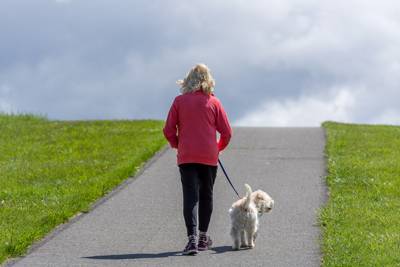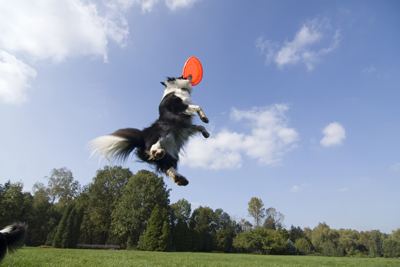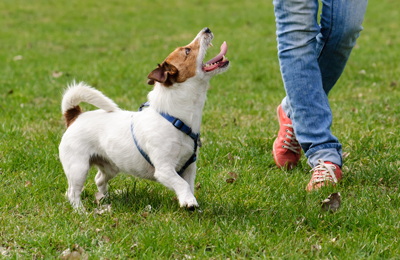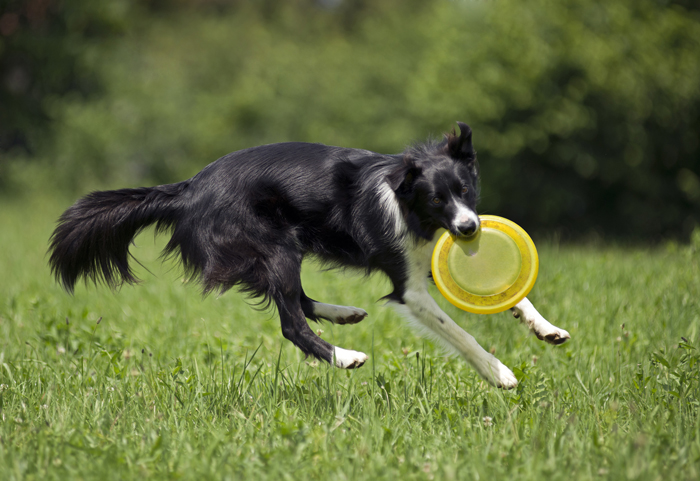Regular activity is good for your pet—and you.

Photo credit: frank1crayon/Adobe Stock
When it comes to daily exercise, if it’s good for you; it’s good for your dog. All the incentive you might need to get out there and walk is your dog eagerly wagging his tail in anticipation—and possibly even bringing you his leash.
Even if you have a backyard for your dog to play in, there is no substitute for a nice long walk or a romp at a park. Dogs are great explorers and whether you are walking around the neighborhood, on country road or a in a mall, your dog will benefit physically and mentally—the myriad smells he encounters will add to his entertainment.
Dogs left alone at home for long hours offer suffer from “cabin fever,” leading to stress and anxiety, which could result in unwanted chewing behaviors. Daily walks allow a dog to blow off steam that might otherwise be acted out by such negative behaviors. It’s the same for people—a change of scenery can do wonders.

Photo credit: fibena/Adobe Stock
Many dogs were initially bred to perform tasks and/or work; it’s in their DNA. This is why it’s vital that you understand your dog’s breed(s) characteristics so that the exercise you provide satisfies his natural instincts. For example, most herding dogs would jump at the opportunity to go to livestock-herding classes. And games of fetch engage many breed’s retrieval instincts.
Whatever size your dog is—large, medium, small or somewhere in between—regular exercise is essential. It’s a misconception that small dogs such as Yorkies don’t need as much exercise as a large Labrador does. All dogs benefit, irrespective of size. However, you do need to take your dog’s age and health into consideration. Always check with your vet if you’re not sure of the distance your dog can handle on a daily walk. You should also be cognizant of the route and its gradient, too, especially if you have an older dog with joint issues.

Photo credit: alexei_tm
However, this doesn’t mean you should not take your older dog for walks. A study by researchers at the University of Veterinary Medicine in Vienna looked at how well physiotherapy—walking uphill, walking downhill and walking over low obstacles—helps relieve arthritic pain and immobility in dogs. The researchers found that walking downhill did not have much therapeutic benefit but walking uphill could help improve a dog’s joint flexibility, particularly at the hip, and that providing low obstacles could aid in improving the bending of the joints in the fore- and hind limbs.
Ideally, dogs should go for walks at least twice a day along with other forms of exercise, especially if they are home alone a lot. Another benefit of daily outings is that it allows a dog to develop good social skills and learn to deal with common situations when out and about. And you just never know what new friends you could make, too.
About the Author: Sandy Robins is the 2013 winner of the “Excellence in Journalism and Outstanding Contribution to the Pet Industry Award.” Her work appears on many of the country’s leading pet platforms, such as MSNBC.com, MSN.com and TODAYShow.com. She is a regular contributor and columnist in multiple national and international publications, including Catster, as well as the author of the award-winning books “Fabulous Felines: Health and Beauty Secrets for the Pampered Cat” and “For The Love of Cats.” Learn more about Sandy on her website or Facebook page. #welovecats






